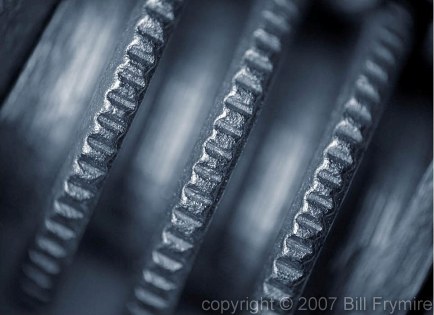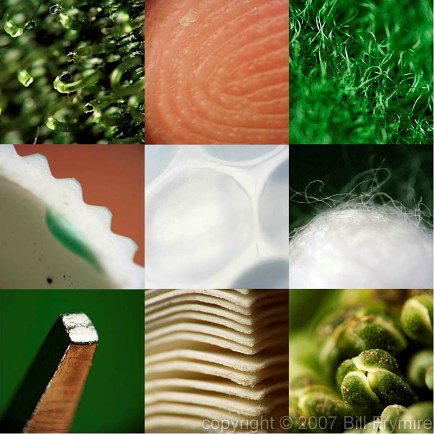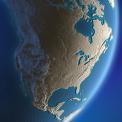fantastic voyage
You can find this image in my gallery under miscellaneous>>macro>> macro gear.
Why is it we always have to look so far away? Why don’t we take a look at the things that are right in front of us? Perhaps it’s because man is an exploratory creature, always wondering what is over the distant horizon. Sometimes we take for granted the things we have right where we are.
I found it surprising that we know more about the surface of the moon than we do about the seafloor of our deep oceans. The recent interest in global warming is an encouraging sign of a renewed interest in maintaining a healthier planet. Let’s hope this trend continues.
Bringing the distant up close is a marvelous capability of modern optical science. What a thrill it must have been for Galileo to first look through his first working telescope model. Later with the development of photography, the magnified image could be enjoyed by the masses by capturing those images for all to see.
As photographers, we know the farther away you can be from your subject and still get the subject to “fill the frame” can be a very expensive endeavour. Still, there is something special about a razor-sharp image of a distant animal or scene, details that elude the naked eye pop out. Anyone who has ever poured over a giant panoramic cityscape or landscape and said, “I never knew that was there” or checked out a crowd scene and thought, “man there’s some weird-looking people out there!” can surely agree.
But long lenses aren’t for everyone. Don’t get me wrong, I’d love to have a 600mm f4 lens, I just can’t afford one! Fortunately, there’s another way of seeing the unseen, and it’s “closer” not “farther”. If you look hard enough and close enough you can find wonder in the most unlikely of places. We can start by looking at simple things that most would think are uninspiring as a subject, a paperclip, the edge of a book. By peering in closer than is humanly possible, we step into a whole new world in a bizarre scale.
It reminds me of one of my favourite boyhood movies “Fantastic Voyage” where some scientists shrink to a microscopic size and travel through a human body racing to unblock a brain clot before they return to normal size again. Kind of like “Honey I shrunk the Kids” but with Raquel Welch instead of Rick Moranis. Now you now why I really liked it so much.
It’s not quite as fantastic as having Raquel Welch course through your veins but when you get REALLY close, ordinary household objects take on an extraordinary appearance, to the point of being unidentifiable. Now I’m not going to go all “Zen” on you but you’ve got to admit there’s some crazy shit going on in there if you look close enough.
For instance, have you ever looked closely at dust bunnies? No, not the digital variety that show up on your digital pictures from your dirty sensor, but the real live ones that multiply like …well, “bunnies” behind your doors and under your desk. How can something so hideous be called a bunny? Maybe a better question would be why would you want to photograph one anyway? I have heard of an artist that did just that.
Ok, maybe dust bunnies aren’t your thing, there are lots of other undiscovered images lurking in your kitchen, workshop, or your miscellaneous drawer.
My image of the spiral gear of a crescent wrench takes on a heavy duty industrial appearance that defies the fact it is actually the size of a toy and I bought it at a dollar store. Somehow the silky shallow depth adds a sense of mystery because only a small portion of the image is in focus.
Luckily, this capability is now available to many photographers without spending a fortune. The close-up ability of modern digicams has allowed many camera owners to take close-ups without the supplementary lenses or accessories previously needed to participate in this type of image making. As a bonus, by utilizing a smaller sensor, modern still frame digicams can produce much more of the precious depth-of-field that close-up photographers usually lust over. But there is a catch, I’m not aware of any that can provide the image quality and the ultra close-ups obtainable with D-SLRs and traditional macro setups. Depth of field is such a precious commodity in the “macro” world that I’m sure there are creative minds out there that will find a way to utilize this advantage.
Here is a set of extreme close-ups that I took one night with my 200mm lens with a 50mm reversed on the end. I’m guessing the images would be about 5x magnification. See if you can make out what they are before reading their true identity below.
The images are from top left to bottom right:
the “loop” part of Velcro, a fingerprint, green felt material from a pool table, a toothpaste lid (yuck), a golf ball, the end of a q-tip, a table fork prong , the edge of a book, and broccoli.
Now those rainy days that dampened your spirits before, open up a whole new world for you to explore, right in the comfort of your own home.


















March 9th, 2008 at 4:43 pm
great shots! very encouraging – thnx! Time to shrug off the 12+ feet of snow we’ve had here in New Brunswick and use the macro setting on my Tamron 70-300!